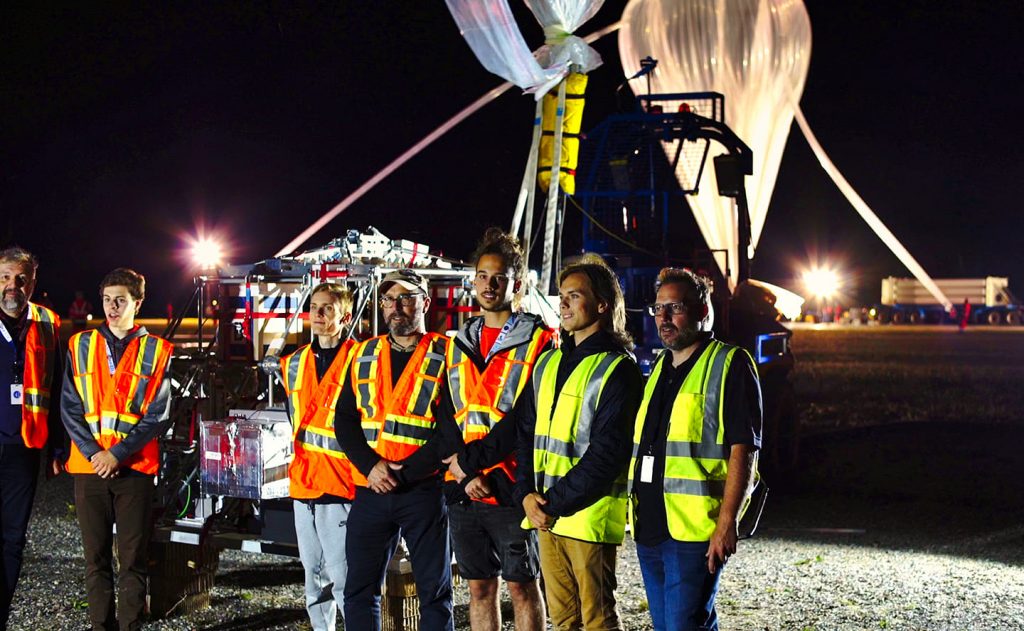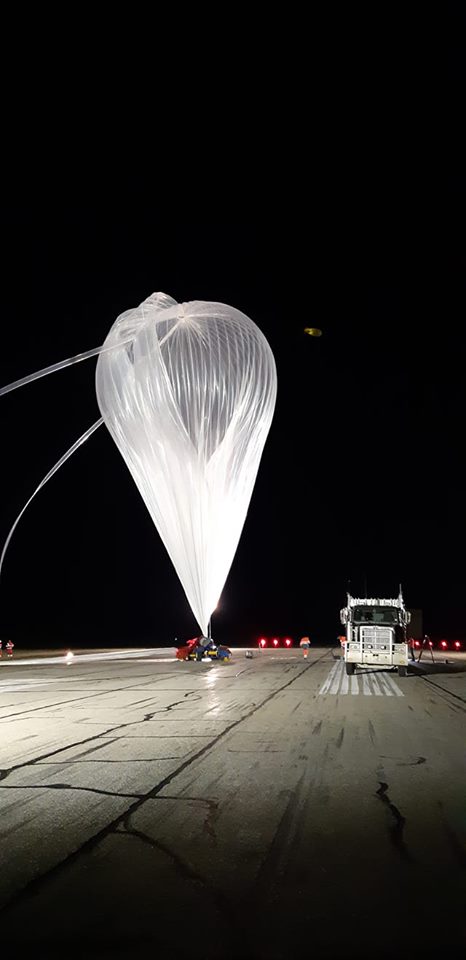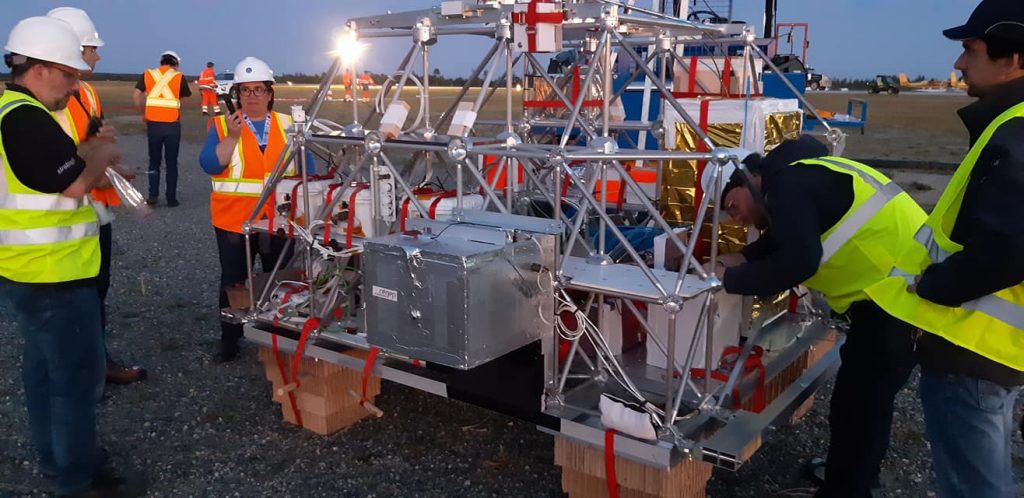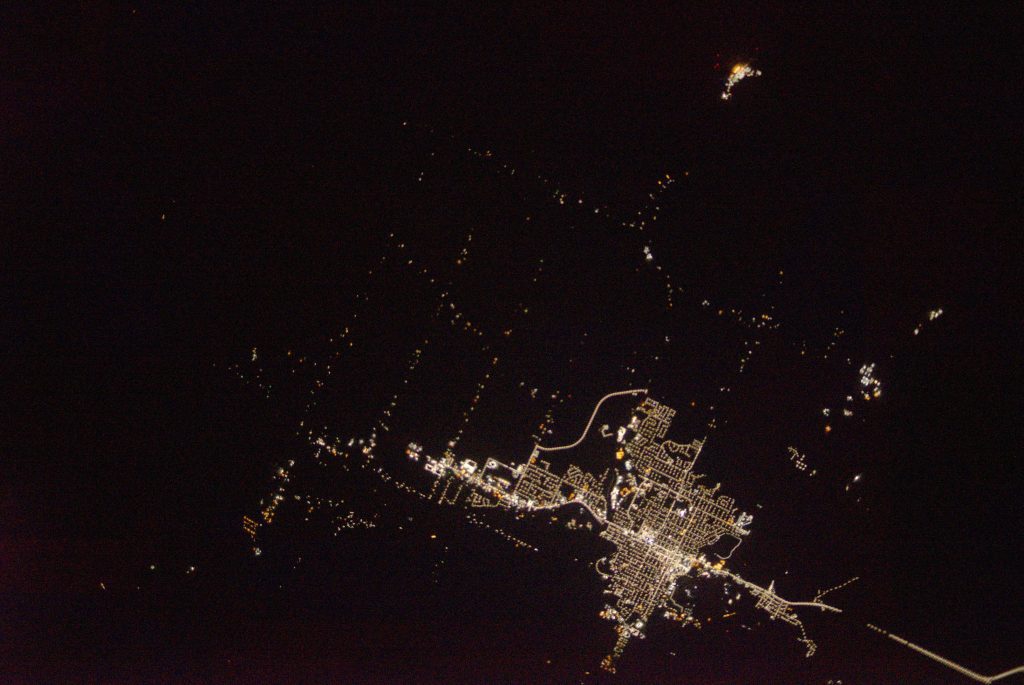CRAQ researcher Martin Aubé and his students launch a balloon in the stratosphere to better understand light pollution.
Martin Aubé, physics teacher at Cégep de Sherbrooke and member of the Center for Research in Astrophysics of Quebec (CRAQ), along with four of his students launched a stratospheric balloon in Timmins, Ontario, to collect data needed for their research on light pollution and its impact on health. The experiment is part of the stratospheric balloon program, led by the Canadian space agency (CSA) and the French space agency (CNES).

The HABLAN team before launch. From left to right: Zoltan Kollath, Mikael Labrecque, Vincent Jordan, Martin Aubé, Laurent Lemay, Simon Trudeau ant Martin Laflamme from the Canadian Space Agency.
The HABLAN experiment (High Altitude Light Balloon At Night), developed in collaboration with Professor Zoltan Kollath of Eötvös Loránd University (ELTE) in Hungary, aims to perform remote sensing of artificial light from the sky using a stratospheric balloon. The balloon is 200 meters high and 50 meters wide. It carries a pod equipped with two DSLR digital cameras up to an altitude of 36 km above the ground. The objective is to determine the optical properties of lighting devices responsible for light pollution using multiple images. These measurements are very useful for feeding data to radiative light pollution transfer models such as the “Illumina” model created by the Cégep de Sherbrooke research group on light pollution.

The data collected will help determine the level of artificial light entering homes, and possibly, to assess its impact on people’s health, and more specifically, its role in the proliferation of prostate cancer cases.
About the HABLAN system
The HABLAN system consists of two DSLR cameras. One is equipped with a 50mm lens, providing high spatial resolution image collection (6m / pixel). Information such as the multispectral radiance of light sources and spectral type, ground coverage and properties of obstacles can be deduced from the data obtained with this camera.

The second camera is equipped with a very wide-angle fisheye lens of 8 mm, so that the angular function of the light sources is sampled at nearly 90 degrees from the zenith.
Near the flight area, ground data is also acquired. For example, the LANcube multi-angle and multispectral sensor was used in roadrunner mode to map night light in the overflown region. The brightness of the sky was also sampled with a fisheye camera. The ground-based data is used to validate the accuracy of the remote sensing method from space.

Flight over Timmins, Ontario.
Contact:
Martin Aubé
CÉGEP de Sherbrooke
Phone : (819) 564-6350 x6232
aubema@gmail.com
Source:
Robert Lamontagne
Coordinator and Media relation
Centre de recherche en astrophysique du Québec
Phone : (438) 495-3482
lamont@astro.umontreal.ca
